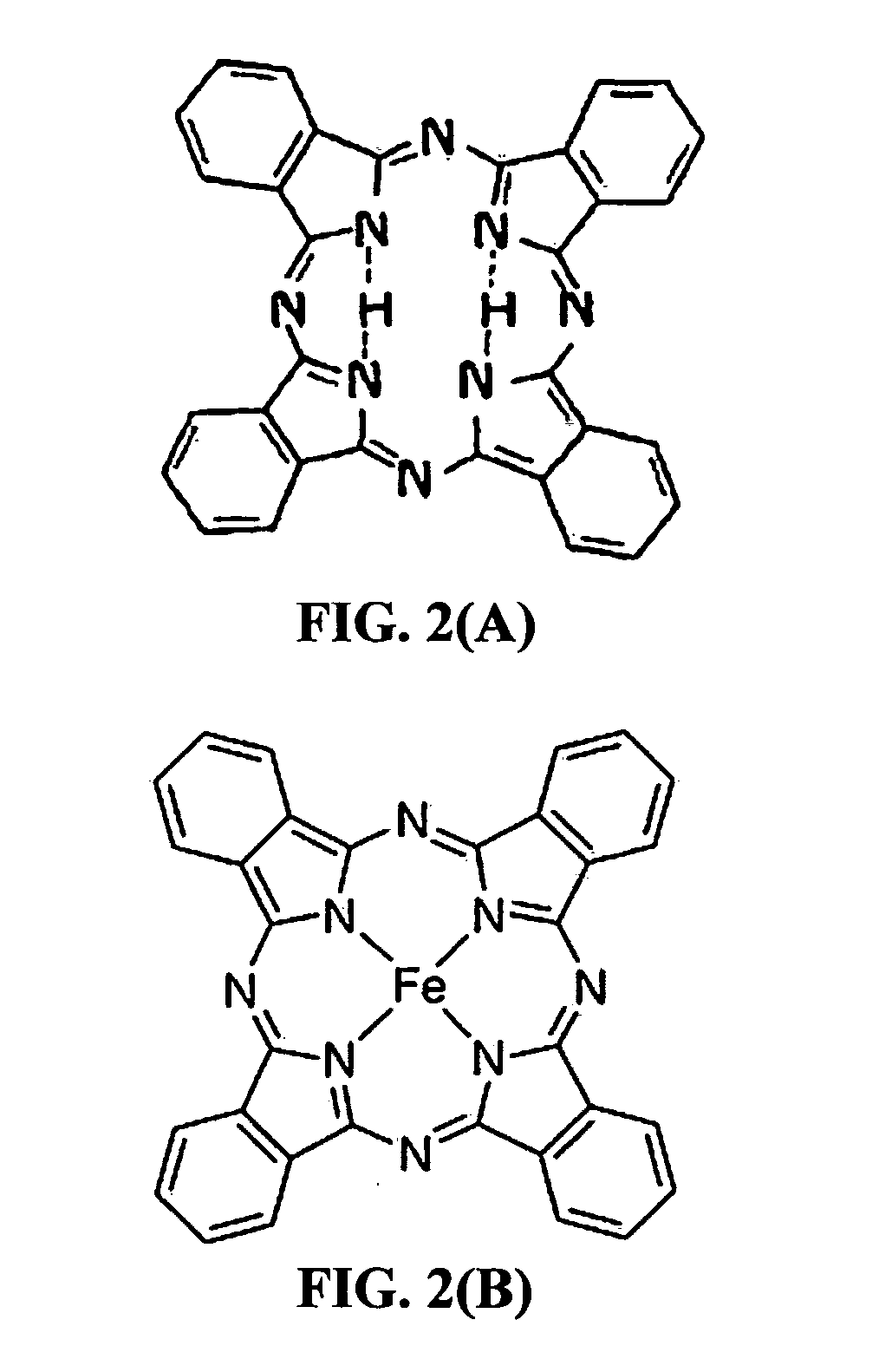Encapsulated phthalocyanine particles, high-capacity cathode containing these particles, and rechargeable lithium cell containing such a cathode
a high-capacity cathode and phthalocyanine technology, which is applied in the direction of non-aqueous electrolyte cells, cell components, electrochemical generators, etc., to achieve the effects of high theoretical lithium storage capacity, low electrical and thermal conductivity, and accelerated decomposition reaction of electroly
- Summary
- Abstract
- Description
- Claims
- Application Information
AI Technical Summary
Benefits of technology
Problems solved by technology
Method used
Image
Examples
example 1
Preparation of FePc-Polythiophene Core-Shell Structures
[0137]For the purpose of investigating conducting polymer-protected phthalocyanine (using FcPc) as an example), FePc-polythiophene (Pc-PT) core-shell composites and neat polythiophene were synthesized by an in situ chemical oxidative polymerization method. Thiophene monomer (1.34, 2.68, and 5.26 g) was dissolved in 50 mL of chloroform to obtain monomer solutions. Three separate batches of solutions of 10.00 g of FePc, 100 mL of chloroform, and different amounts of FeCl3 (4:1 m / m FeCl3 / thiophene) were separately added to three 3-necked flasks, which were each stirred for 30 min. The thiophene monomer mixture was added slowly to the afore-mentioned flasks, and the mixture in each flask was stirred for 10 h at 0° C. After polymerization, 100 mL of methanol was added to the mixture to dissolve the remaining iron chloride. The mixture was then filtered to remove the iron ions, and the remaining insoluble solid was collected. This was...
example 2
Preparation of Various Phthalocyanine-Carbon (Pc / C) Core-Shell Structures from Malic Acid
[0138]Pure metal-free and various transition metal phthalocyanine nanoparticles were initially prepared through controlled precipitation of a phthalocyanine-solvent solution in a rigorously stirred non-solvent. Phthalocyanine nanoparticles alone were found to exhibit poor electrochemical performance because of the easy aggregation of nanoparticles, high inter-particle contact resistance, and high solubility in the liquid portion of electrolyte.
[0139]Presumably, one could coat a layer of conducting material on the surface of a phthalocyanine compound particle, completely embracing the particle, to overcome the above-cited problems. However, it has not been known as to what type of material could play such a role. In particular, there has been no teaching about the ability of any electrically conductive or non-conductive material to hermetically wrap around a phthalocyanine compound particle, prev...
example 3
Preparation of Various Polymer Protected Phthalocyanine Compounds
[0141]Emulsion polymerization was found to provide simple and direct route for the preparation phthalocyanine compound nanoparticles embedded into polymeric nanospheres. In a typical process, phthalocyanine compound nanoparticles are first dispersed in an aqueous solution containing a statistical oligomer constituted of five butyl acrylate and ten acrylic acid units prepared by reversible addition fragmentation chain transfer (RAFT) polymerization using a trithiocarbonate as RAFT agent. Then, emulsion polymerization is initiated, leading to the formation of thin polymer coating around phthalocyanine compound nanoparticles.
PUM
 Login to View More
Login to View More Abstract
Description
Claims
Application Information
 Login to View More
Login to View More - R&D
- Intellectual Property
- Life Sciences
- Materials
- Tech Scout
- Unparalleled Data Quality
- Higher Quality Content
- 60% Fewer Hallucinations
Browse by: Latest US Patents, China's latest patents, Technical Efficacy Thesaurus, Application Domain, Technology Topic, Popular Technical Reports.
© 2025 PatSnap. All rights reserved.Legal|Privacy policy|Modern Slavery Act Transparency Statement|Sitemap|About US| Contact US: help@patsnap.com



